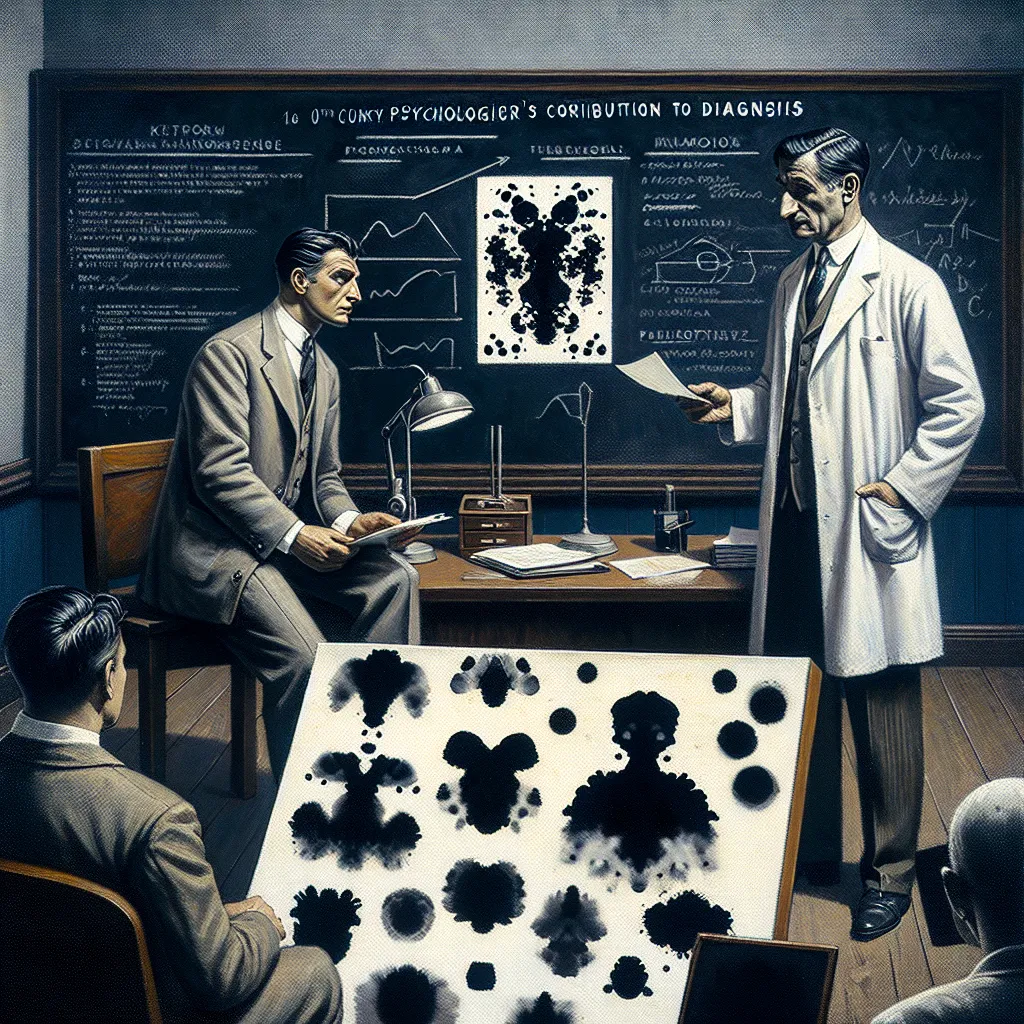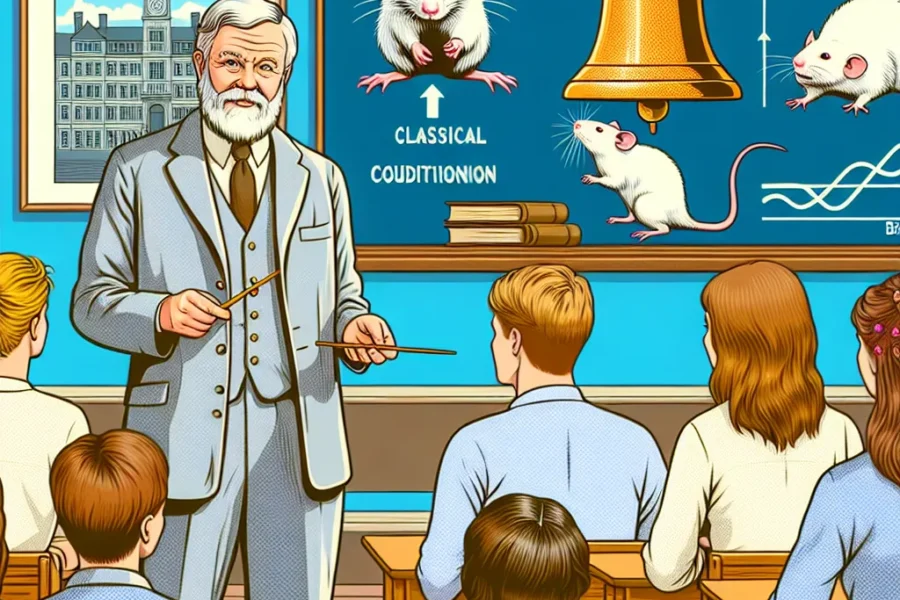Hermann Rorschach and His Psychodiagnostic Contribution
Hermann Rorschach, a name synonymous with the intriguing world of psychology, etched his indelible mark through a groundbreaking contribution: the Rorschach inkblot test. Considered one of the most compelling personalities in the field of psychodiagnosis, Rorschach’s innovative technique revolutionized the understanding of personality and opened new avenues in psychological assessment. Throughout this exploration, we delve into the life of Rorschach, his intellectual legacy, and the profound impact of his work on contemporary psychodiagnostic practices.
Born on November 8, 1884, in Zurich, Switzerland, Hermann Rorschach was fascinated by the human psyche from a young age. His father, an art teacher, incited in him a love for paintings and inkblots, which later became the cornerstone of his psychological theory. Rorschach’s early interests laid the foundation for his medical studies, which he pursued at several prestigious universities, including Zurich, Berlin, and Bern.
After obtaining his medical degree, Rorschach’s encounters with psychoanalysis and leading figures like Carl Jung further shaped his theoretical approach. His curiosity in psychoanalytic theory intertwined with his artistic background, guiding him toward a novel method for examining the human mind. Rorschach’s belief that perceptual interpretation could reveal deeper aspects of an individual’s personality led to his magnum opus—the Rorschach inkblot test.
The Rorschach inkblot test, intrinsically simple yet profoundly insightful, consists of ten standardized inkblots. These ambiguous shapes, a combination of symmetry, form, and color, serve as stimuli to which subjects respond by describing what they see. Rorschach devised these inkblots with meticulous care, ensuring they were devoid of recognizable images that could influence the perceptions of the test-takers.
This psychodiagnostic tool swiftly gained recognition for its ability to tap into the unconscious elements of the psyche. The rationale behind the test is grounded in the concept of projection—a psychological phenomenon where individuals impose their own interpretations and emotions onto ambiguous stimuli. By analyzing a person’s responses to the inkblots, psychologists obtain a window into their inner world, discerning facets of their character, thought processes, emotional functioning, and potentially, underlying psychological disorders.
Rorschach’s methodical approach to interpreting the inkblot responses was as innovative as the test itself. He developed a scoring system that examined various dimensions of the responses, such as the location of focus, the determinants (what aspect of the inkblot influenced the response), and the content. This rigorous and structured approach established Rorschach’s test not only as a creative endeavor but also as a scientifically valid psychodiagnostic instrument.
Despite the test’s initial controversy, it gained traction and soon became one of the most widely used psychological tests worldwide. Its applications are diverse, ranging from clinical settings for diagnosing mental health conditions to forensic examinations and even in organizational contexts for personality assessment.
Rorschach’s contributions, however, were not limited to the development of his eponymous test. He was also a pioneer in the broader field of psychodiagnostics. His work emphasized the importance of exploring subjective experiences and the need for psychologists to grasp the complex tapestry of human emotions and cognitions. Rorschach advocated a holistic approach to understanding an individual, arguing that every person’s reality is uniquely constructed based on their perceptions and experiences.
Beyond the realms of psychology, Rorschach’s influence permeated other disciplines. The inkblot test sparked conversations about human interpretation and subjectivity in fields like art, literature, and philosophy. It has been a source of inspiration for artists and writers, who see in it a reflection of the enigmatic nature of perception and the boundless potential of the human imagination.
Unfortunately, Rorschach’s life was cut short at the age of 37, when he passed away on April 1, 1922. His untimely death meant that he did not witness the full extent of the impact of his work. Nevertheless, his legacy thrived posthumously, as his test continued to evolve and adapt to the complexities of psychological assessment.
In the years following Rorschach’s death, the test has been subjected to rigorous scientific scrutiny. It has been standardized, statistically validated, and adapted to various cultural contexts to ensure its relevance and accuracy across diverse populations. Refinements and modifications to the scoring and interpretation systems, such as the Exner System of scoring, have maintained the test’s clinical utility and relevance.
Despite these advancements, the Rorschach inkblot test has had its share of critics. Some argue that its interpretive nature lends it to subjectivity and bias, questioning its reliability and validity. However, its proponents counter that when administered and interpreted by trained professionals, it remains a valuable qualitative tool for gaining deep insight into an individual’s psychological makeup.
Rorschach’s psychodiagnostic contribution transcends the inkblots themselves. It embodies the essence of psychological practice—unveiling the complex inner workings of the mind and interpreting the often ineffable elements of human consciousness. In the ever-evolving landscape of psychology, Rorschach’s inkblot test continues to serve as a tool for exploration and understanding, a testament to the profound contribution of Hermann Rorschach to the science of the mind.
In conclusion, Hermann Rorschach’s legacy is one of visionary thinking and transformative impact. His introduction of the Rorschach inkblot test not only offered a unique method for exploring the depths of an individual’s psyche but also challenged the conventional approaches to psychodiagnosis. More than a century later, his work remains a vital part of psychological evaluation and a powerful reminder of the intricate connections between perception, personality, and psychopathology. Rorschach’s influence endures, inspiring psychologists to continually seek novel ways of understanding the mind’s mysterious landscape.



Leave a Comment